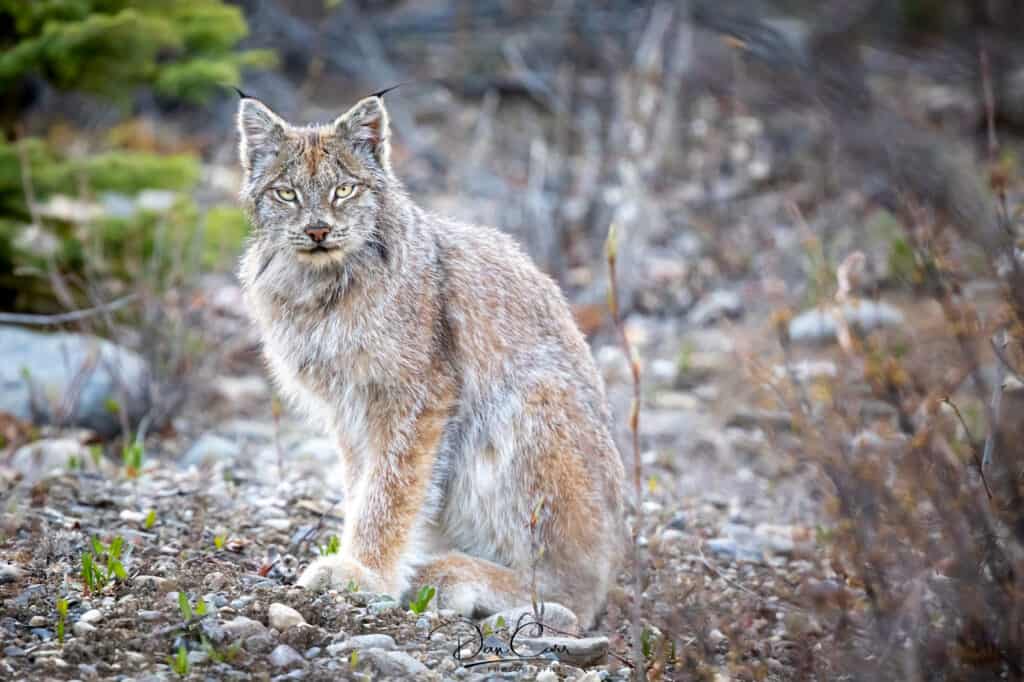For this Behind the Shot post I wanted to discuss a recent situation that I think everyone needs to be prepared for. Autofocus performance varies from brand to brand, but even the best – at this time that is certainly any Sony camera with their Real Time Eye AF system – can get caught out by complex situations with a lot of foreground clutter.
Equipment Used For This Shot
- Canon 5D Mark IV
- Canon 400mm f/4 DO IS II
- ProGrade Digital SD cards
- RRS L bracket
- Peak Design Slide Lite camera strap
- LensCoat LensCover
It’s therefore important to understand your camera system and lenses well enough to be able to switch to manual focusing at the drop of a hat. For some lenses and cameras you can simply reach up and grab the focus ring to activate manual override of the AF system. For others you might have to physically flick the AF/M focus switch on the lens or camera body.
But understanding how to get into manual focus mode is only half of it. You also need to have an idea how the lens is going to react when you reach for that focus ring to try and capture a fleeting moment. The feel of the focus movement varies from lens to lens and brand to brand. There’s also a huge difference in the feel that you get from a focus ring that is physically coupled to the movement of the lens’ focusing elements, and one that runs a focus-by-wire system where the focus ring simply sends an electrical signal to a motor that adjusts the focus.
On top of that, every lens has a different focus throw! This is the distance that the ring is rotated from closest focus to infinity. Some lenses might only require a 150 degree rotation to go from near to far, whilst others might require 300 degrees! To complicate all these things, it’s very likely you have lenses in your kit that all perform in different ways.

While I was out searching for wildlife in Northern Canada I came across this young Canada lynx. I spend some time with it out in the open, gradually getting a little closer as it got comfortable with me. Those shots were OK, but the background wasn’t ideal and at the time I was still hoping for something better.
After a while the cat turned and started to wonder into the trees so I followed it from behind and watched in awe as it began to stalk something amongst the tight branches. I couldn’t see what it was looking at, but it was most likely a snowshoe hare as this is their main food source.
With the cat stalking away from me, I couldn’t get a great shot but a few minutes into the hunt it paused for a second and looked back at me. As it did so, I immediately realised that there was a real tangle of branches between us and I knew from experience that this would trip up my Canon autofocus system. Had I tried to autofocus I probably would have sent the camera into a focus hunting frenzy that would have cost me all the time available to grab this moment.

Instead, I moved my fingers back on the lens barrel and quickly adjusted the focus manually to grab a couple of frames before the lynx looked away. I’m certain that had I relied upon my AF system, I wouldn’t have got this shot. And I’m fairly certain that the knowledge of my gear and the manual focus muscle memory I have stored away somewhere from practicing this sort of situation, was also a key factor to my success in this moment.
I love this shot. The Canada lynx is a shy, elusive creature and surrounded by the branches in this forest, I think you really get that sense from the photo.
Next time you are out with your gear, take some time to familiarize yourself with the manual focus characteristics of your setup. If you’re shooting a static subject, switch off your reliance on the AF system for a few minutes and practice focusing manually. You never know when that knowledge and practice will come in handy.



